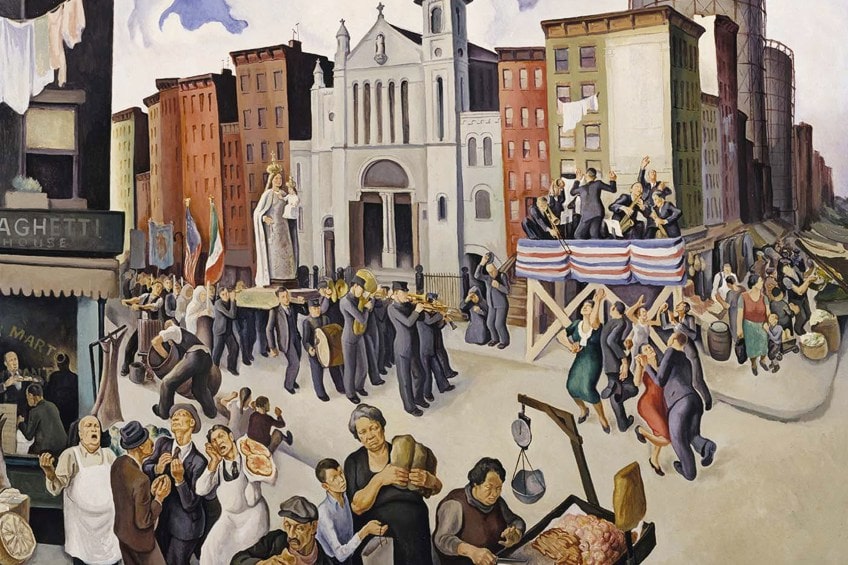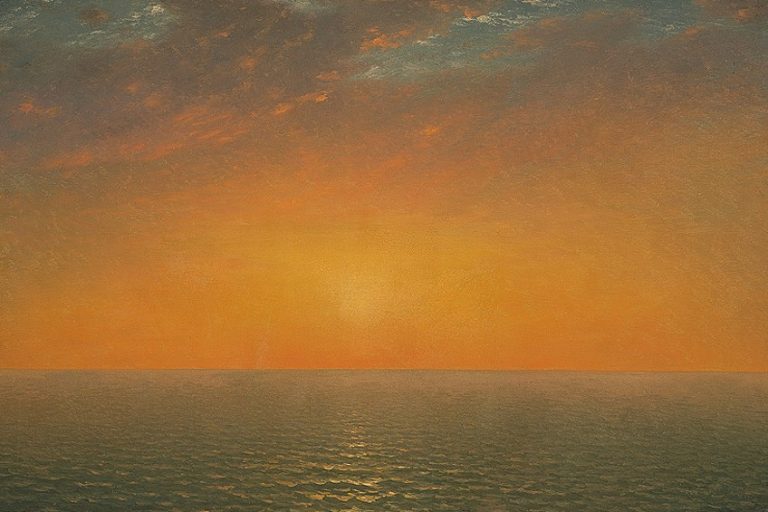1930s Art – A Look at the Art and Artists of America After the Fall
The American Scene was a 1930s art movement that began in ardent opposition to the growth of European modernism and was distinguished by a commitment to authentically American subject matter. “America after the fall” is defined as an era marked by the Great Depression’s social and economic wreckage, during which Americans retreated inside, seeking consolation in themselves and their culture. For his subject matter, the 1930s artist resorted to his roots, moving as far away from worldwide notions as possible. In the 1930s, art migrated out from ivory towers and into the countryside, communities, and industry.
The 1930s Art Styles and Artists
During the era of Great Depression art, a significant proportion of 1930s artists spurned the more revolutionary, non-objective creative movements that were gaining popularity internationally, rather concentrating on native topics produced in a primarily realistic manner, generating a “democratic” art style that was understandable and accessible to the broader population.
The artists of the 1930s art movement known as the American Scene ranged from Regionalists such as Grant Wood, Thomas Hart Benton, and John Steuart Curry, who commemorated the qualities of rural America, while Urban Realists such as Isabel Bishop and Reginald Marsh, and Social Realists such as William Gropper, Ben Shahn, and the Soyer brothers either endorsed the merits of urban America or used art to express their ideologies for political reforms.
The federal government provided significant support for art in the 1930s, employing thousands of artists in its public art initiatives – both as mural painters and canvas painters – at the peak of the Depression. Benton, Hopper, Wood, and Marsh were among the giants of art in the 1930s.
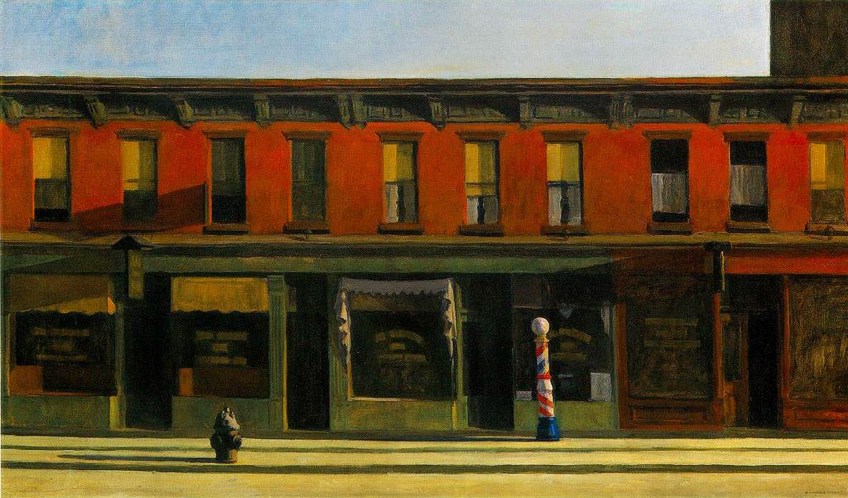
Yet, there were a plethora of other artists active during those years of Great Depression art, who according to one writer, “earned great acclaim among their colleagues as well as with the population as a whole but whose personal legacies after the war in many instances experienced the humiliation of neglect.” The output of this “overlooked generation” of American 1930s artists continues to be overlooked in art history circles. Retrospective art study has largely concentrated on the rise of abstract expressionism and the growth of other avant-garde art styles in America by the mid-20th century. The tide, on the other hand, might be shifting.
The 1930s art movement is gaining popularity as the artwork of 19th- and early-20th-century artists becomes prohibitively costly.
Collectors are starting to revisit the less well-known names of this practically forgotten generation of American artists; people who studied at America’s leading art schools and generated creations of remarkable artistry and charm, only to have their achievements overshadowed by the arrival of modern art and abstraction.
Important 1930s Artists in America After the Fall
What exactly was the 1930s art style in America? That is a topic that the nation’s artists pondered and addressed in a variety of ways over the decade that spanned the 1929 economic meltdown to Usa’s participation in World War II. With the country’s economy in decline and the prospect of fascism on the rise, painters of the time used their distinct views of the country to reinterpret modernism.
The artistically and ideologically diverse works created by the 1930s artists give a vivid portrayal of the nation’s changing mindset.
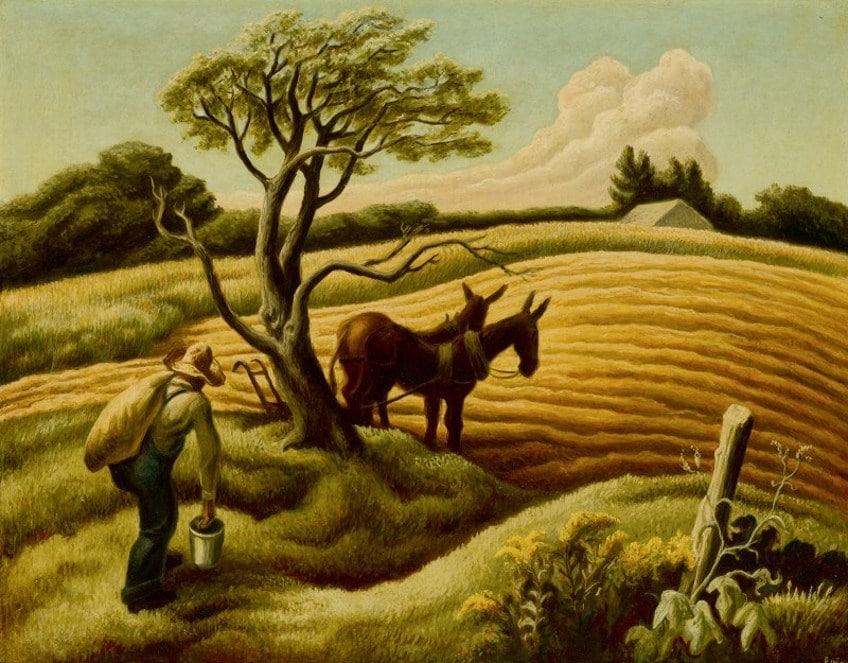
The thoughtful, somber attitude of Edward Hopper to local topics contrasts sharply with the flamboyant idealism of Thomas Hart Benton and his colleagues’ Regionalists, who aimed to produce a patriotic painting that exalted America. Artists such as Ben Shahn and Philip Evergood employed social realism to criticize current political beliefs, stressing the hardships of migrant farmworkers, Jewish migrants, and other oppressed segments of society.
Simultaneously, some artists rekindled the struggle against representational 1930s art style, embracing nonobjective painting as a genre that spoke directly to contemporary issues.
William J. L’Engle (1884 – 1957)
| Nationality | American |
| Date of Birth | 22 April 1884 |
| Date of Death | c. 1957 |
| Place of Birth | Jacksonville, Florida |
William J. L’Engle graduated from Yale University in 1906 with a major in naval architecture and was well-known among his peers for his draftsmanship. He was also a standout on the track and field team, where he set the mile record. After graduating, he became interested in the fine arts and enrolled at the Art Students League in New York City. He then went to Paris to enhance his creative education. He spent five years at The Academie Julian there, where he studied for five years.
William J. L’Engle was motivated by the topic of metropolitan nightlife.
Nightclub Dancer, which was completed about 1930, reflects the energy and soul of the Jazz Age, which flourished after World War I and reached its apex in the clubs of New York City’s Harlem. “In tight garments, very sensuous, and swaying to a rhythmic pulse, his dancers exemplify the then-prevailing idea of Africans as primal, foreign, and intensely sensual,” according to a review of his work. As far as historians understand, his final work was The Sacrifice of Abraham, which was completed in 1957, the very same year of his demise, and examines a version of the biblical event that has intrigued prominent painters all through history.
James O. Chapin (1887 – 1975)
| Nationality | American |
| Date of Birth | 9 July 1887 |
| Date of Death | 12 July 1975 |
| Place of Birth | West Orange, New Jersey |
James O. Chapin was among the most widely regarded members of this group. Chapin undertook evening painting studies at Cooper Union New York after being forced to serve as a banking runner before graduating high school. Later, with the generous financial help of a relative, he enrolled for two years in Antwerp’s Royal Academy before moving to Paris. There, he fell in love with Cezanne and the ideas of modernism before coming home to establish his own style.
By 1924, he had moved to rustic New Jersey, renting a rural home from the Marvins, a farming family he painted in a delicate series of very realistic canvases that garnered him national fame starting in 1929. The painter was at the peak of his success in the early 1930s when he produced Young Ball Player (1933), with no fewer than 18 solo exhibits over the next five years. The gallant young man shown in this piece is a regional “bush-leaguer” who starred for the Woodglen town team.
It is the first of four known pictures by the painter that shows immortal semi-professional ballplayers, making it a classic American Scene topic.
Thomas Hart Benton (1889 – 1975)
| Nationality | American |
| Date of Birth | 15 April 1889 |
| Date of Death | 19 January 1975 |
| Place of Birth | Neosho, Missouri |
Benton’s primary contribution to 20th-century American painting may have been his thematic concentration on pictures of everyday people and folklore. His expressive realism is distinguished by accentuated curvilinear shapes and forms, as well as the dramatic use of essential colors. Benton broadened both the variety of feasible artistic subject material and the potential market for Art by diverting focus away from New York and toward the Midwest.
Benton’s canvases and prints were committed to being reminiscent of music and sound as a form of communication.
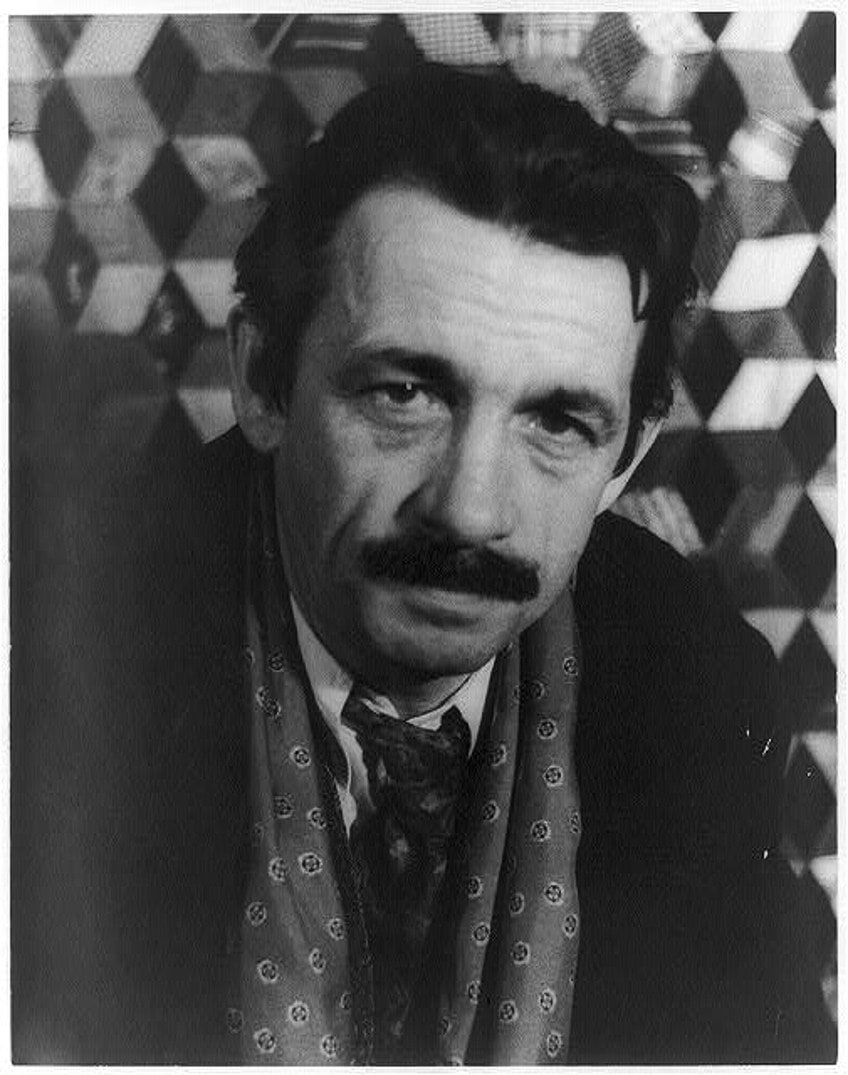
His concern with sound, typically in the form of vernacular melodies and instrumentation, as well as stump-speeches and conversation, may be traced back to his family’s background in Missouri affairs, where one frequently spoke of the people’s voice; Benton attempted to keep this populist perspective intact in his art. The painter was also a prominent music curator, cataloguer, transcriptionist, and publisher.
In the 1930s, Jackson Pollock was Benton’s greatest enthusiastic admirer, and his early work is stylistically and thematically identical to that of his instructor. Pollock’s turn toward pure abstractions is better viewed as an aesthetic movement than a full departure from Benton.
The transition from Regionalism to Abstract Expressionism may also be seen as part of a larger political and cultural movement from New Deal reform policies to the Cold War post-atomic period. As with artworks such as City Building (1931), just standing in front of this massive, highly colored picture, one can feel the city throbbing and pulsing with fresh vitality.
Reginald Marsh (1898 – 1954)
| Nationality | American |
| Date of Birth | 14 March 1898 |
| Date of Death | 3 July 1954 |
| Place of Birth | Paris, France |
Reginald Marsh was an astute watcher of people, and his vibrant, documentary-style works are notable for their emphasis on the masses instead of on individual characters. Marsh painted in the 1930s and 1940s, depicting a city undergoing significant social and financial upheaval as a result of the Great Depression, the changing position of women in society, and the outbreak of World War II.
Marsh, a social realist, was obsessed with populist pastimes like Coney Island attractions, burlesque performances, and dance clubs.
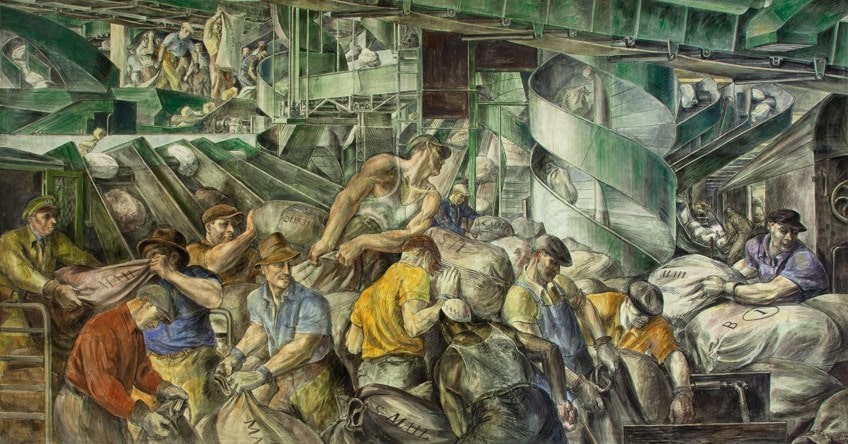
He portrayed the everyday lives of working-class urban dwellers, frequently portraying the underbelly of the amusements they loved. Marsh captures the excitement and velocity of New York via intricate, multi-figure compositions and brilliant colors.
His works frequently lacked a clear visual emphasis, which, along with his jagged brushstrokes and asymmetry, does not let the gaze settle at any one location, generating a sense of unrest and constant motion in his paintings that contrasts sharply with the output of other Regionalist painters. Many of Marsh’s works feature posters and advertisements, drawing emphasis on the medium’s spread and juxtaposing its gaudy look, commodities, and claims with the ordinary lives of people who devoured it.
Marsh may be considered as a predecessor of the Pop Art style that arose in the late 1950s by authentically recreating this iconography and using it as a social statement.
Ben Shahn (1898 – 1969)
| Nationality | American |
| Date of Birth | 12 September 1898 |
| Date of Death | 14 March 1969 |
| Place of Birth | Kaunas, Lithuania |
Ben Shahn’s goal to produce narrative art centered on social and political justice has come to epitomize the aesthetic of social consciousness. Shahn remained committed to his vision from the time he was a teenager in Lithuania, when he began questioning religious beliefs, to the end of his life.
He never failed to produce artwork that drew attention to individuals whose lives were difficult, and he did so with integrity rather than sadness or romanticism.
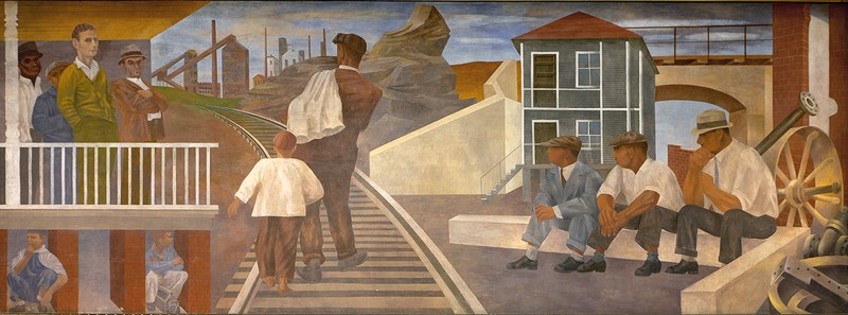
Prior to WWII, Shahn was a leading proponent of what became known as Social Realism. These pieces of art are descriptive, pictorial, and indicative of the destitute, downtrodden, or people living on the outside of society. A devotion to humanism is the driving spirit of Social Realism.
Ben Shahn drew together several types of visual culture in order to bridge the gap between mainstream media and fine art.
In defiance of what Shahn referred to as “pure art norms,” the artist regularly included words, phrases, and quotations into his work to underscore the didactic aspect of his work. Despite his growing celebrity and stature, Shahn remained dedicated to his viewers and topic. Shahn didn’t speak down to the American public; instead, he stood in the mob and battled with them.
Mary Fife (1900 – 1990)
| Nationality | American |
| Date of Birth | c. 1900 |
| Date of Death | c. 1990 |
| Place of Birth | Canton, Ohio |
Mary Fife was the ideal female painter of art in the 1930s in many respects. She was a tremendously creative woman in her own right, but she sacrificed her profession to support the career of her spouse, the painter Edward Laning. Her subject matter centered on the places and people of that region, and she was a lesser-known participant of the “14th Street School,” a diverse group of realist artists whose workshops were located in the Union Square-14th Street neighborhood of New York City.
Place in the Sun (1934), which Fife displayed in 1937 at the Whitney Museum of American Art, is a great piece of the 14th Street 1930s art style, as brilliantly executed as any of her more known contemporaries. The artwork’s subject, four young working ladies savoring their lunch hour on a bright workplace roof on a warm summer’s day, is similar to the artist’s good friend and colleague, Isabel Bishop’s compassionate representations of working females.
Fife’s ladies, on the other hand, are more sensuous, approximating Reginald Marsh’s more overt sensuality. Her subjects are powerful and self-assured, unaffected by guys peering in from surrounding office windows.
Daniel R. Celentano (1902 – 1980)
| Nationality | American |
| Date of Birth | 21 December 1902 |
| Date of Death | c. 1980 |
| Place of Birth | Manhattan, New York |
Daniel Celentano, the child of Italian immigrants, was born into a big family in Manhattan’s Italian district. Because of a childhood polio episode, he had only limited use of his right leg. Because of his impairment, he was not able to attend school, and his parents, recognizing his creative talent when he was still a youngster, managed to organize for art tutors to instruct him at home.
By the age of 12, he had recovered the function of his leg by hard effort and dedication, and he was the first student of the social realism artist Thomas Hart Benton.
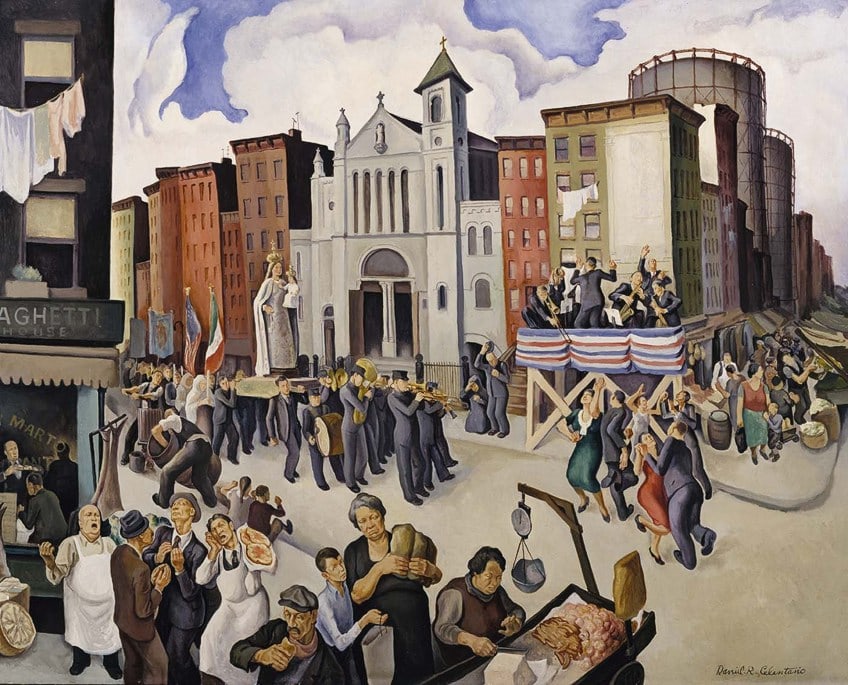
Celentano first showed his work in New York City in 1930. Soon after, he took part in the Works Progress Administration’s mural program. Celentano drew creative influence from his friends’ and neighbors’ everyday routines in Italian Harlem, where he subsequently lived. The Houseboat (1938) is one of several outdoor themes located on or near the East River. Despite the unusual environment, the portrayed family tableau is familiar: a woman, infant in arms, seems ready to punish her roughhousing lads while two masculine figures proceed to their boating jobs despite the commotion.
Beatrice Cuming (1903 – 1974)
| Nationality | American |
| Date of Birth | 25 March 1903 |
| Date of Death | March 1974 |
| Place of Birth | Brooklyn, New York |
Beatrice Cuming taught painting lessons at the Girls’ Community High School for a year after graduating before opting to pursue free-lance commercial art. Cuming relocated to Paris in 1924, using her freelance wages. After a year in Paris, she spent time traveling and painting in North Africa, Italy, England, and Brittany before returning to The United States in 1926. She relocated to Tunisia, with her lover, novelist Dahris Butterworth Martin, in the early 1930s. In 1933 Beatrice Cuming returned to the United States, and then soon developed a new respect for the American countryside.
“I was struck by the richness of content for an artist there, by my own eagerness for it, by the sensation of fitting and not wishing to be elsewhere but here,” she later recounted.
In 1934, she took a train bound for Boston. When the train arrived in Connecticut, she was so taken with the magnificence she saw that she dismounted and began a life in that area, where she drifted toward industrial topics such as steam locomotives, power stations, docks, and industries. Industrial Landscape evokes the austere industrial shapes preferred by Charles Sheeler as well as the impression of urban solitude found in Edward Hopper’s works.
Beacons, dockyard cradles, industrial buildings, railroads, and storehouses were among her favorite themes. Cuming portrays a man’s reality with unflinching zeal.
Leon Bibel (1913 – 1995)
| Nationality | Polish-American |
| Date of Birth | c. 1913 |
| Date of Death | c. 1995 |
| Place of Birth | Poland |
The difficulties faced by the artists of Great Depression art in America after the fall were all too recognizable to the Realist painter Leon Bibel. Bibel, who was born in San Francisco, moved to New York City in 1936, at the peak of the Great Depression. He was an enthusiastic contributor to the WPA’s government arts initiatives. Bibel’s screenprints and paintings, which were heavily influenced by Mexican painters and Thomas Hart Benton, challenged social inequalities or, in the case of Building A Nation (1937), addressed political issues and lauded the ordinary man’s principles and accomplishments.
His daring and frequently extremely politicized topics, as well as his dry, stark technique, wonderfully captured the impassioned, almost holy ideals of art in the 1930s.
Bibel and his wife relocated to South Brunswick, New Jersey, in 1941, after being unable to sustain themselves effectively following the demise of the WPA. For more than 20 years, he gave up his painting to operate as a chicken farmer and nurture their two children. His artworks from the 1930s, many of which reflected his affinities with the Communist cause (and several of which were folded and buried in the lofts of his chicken house throughout the McCarthy period), were not officially shown until nearly 40 years later.
The American scene was a 1930s art trend that arose in vehement opposition to the rise of European modernism and was characterized by a focus on genuinely American subject matter. “America after the fall” is characterized as a period marked by the social and economic devastation of the Great Depression, during which Americans retreated inward, seeking solace in themselves and their culture. The artist of the 1930s reverted to his origins for his subject matter, staying as far away from global conceptions as possible. Art traveled from ivory towers to the countryside, villages, and industry in the 1930s.
Frequently Asked Questions
What Is Meant by America After the Fall?
America after the fall is characterized as an era marked by the Great Depression’s socioeconomic devastation, during which Americans withdrew inward, seeking consolation in themselves and their culture. For his subject matter, the 1930s artist resorted to his roots, moving as far away from worldwide notions as possible.
What Defined Art in the 1930s?
During the Great Depression, a significant proportion of artists rejected the more revolutionary, non-objective creative movements that were gaining international popularity, instead, they focused on native topics produced in a primarily realistic manner, resulting in what was called a democratic art style that was understandable and accessible to the general public. However, there were many more artists active during the Enormous Depression years who, according to one writer had won great recognition among their colleagues as well as with the populace as a whole but whose personal legacies after the war in many instances faced the humiliation of neglect. The work of this so-called forgotten generation of American painters from the 1930s is still underappreciated in art history circles. Collectors are beginning to return to the lesser-known names of this virtually forgotten generation of American artists; people who studied at America’s leading art schools and produced works of exceptional artistry and charm, only to have their achievements overshadowed by the arrival of modern art and abstraction.
Isabella studied at the University of Cape Town in South Africa and graduated with a Bachelor of Arts majoring in English Literature & Language and Psychology. Throughout her undergraduate years, she took Art History as an additional subject and absolutely loved it. Building on from her art history knowledge that began in high school, art has always been a particular area of fascination for her. From learning about artworks previously unknown to her, or sharpening her existing understanding of specific works, the ability to continue learning within this interesting sphere excites her greatly.
Her focal points of interest in art history encompass profiling specific artists and art movements, as it is these areas where she is able to really dig deep into the rich narrative of the art world. Additionally, she particularly enjoys exploring the different artistic styles of the 20th century, as well as the important impact that female artists have had on the development of art history.
Learn more about Isabella Meyer and the Art in Context Team.
Cite this Article
Isabella, Meyer, “1930s Art – A Look at the Art and Artists of America After the Fall.” Art in Context. February 25, 2022. URL: https://artincontext.org/1930s-art/
Meyer, I. (2022, 25 February). 1930s Art – A Look at the Art and Artists of America After the Fall. Art in Context. https://artincontext.org/1930s-art/
Meyer, Isabella. “1930s Art – A Look at the Art and Artists of America After the Fall.” Art in Context, February 25, 2022. https://artincontext.org/1930s-art/.


